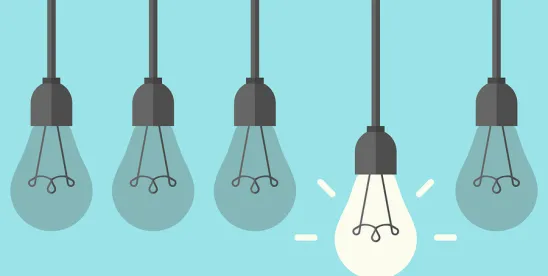On Monday, November 15, 2021, President Biden signed into law the $1.2 trillion Infrastructure Investment and Jobs Act (the “Act”), commonly referred to as the Bipartisan Infrastructure Bill. The package provides funding opportunities for a variety of traditional infrastructure projects, including approximately $65 billion for energy and electric grid development. The Act’s energy provisions are diverse, and include opportunities for those investing in grid resilience and reliability, research and development for newer and emerging technologies such as battery storage and hydrogen, cybersecurity infrastructure, electric vehicle infrastructure, nuclear power, and emissions reduction technologies, among others. This update focuses on one subset of the energy provisions contained in the Act: direct investment in the nation’s electric transmission and distribution facilities.
Excluding portions of the Act related to research and development, the five provisions offering opportunities for transmission developers and owners beginning in fiscal year 2022 are of particular interest.
Transmission Facilitation Program
The Act establishes a Transmission Facilitation Program – funded by a $2.5 billion revolving loan fund – that allows the Department of Energy (“DOE”) to offer loans to, and enter into capacity contracts with, transmission developers in order to provide financial stability to proposed transmission projects. As envisioned, DOE’s implementation of the Transmission Facilitation Program will include DOE’s contracting with transmission developers for long-term capacity service with contract terms of up to 40 years, and for capacity not to exceed 50 percent of a transmission project’s total proposed transmission capacity. In addition to entering into such long-term transmission service contracts, DOE now has statutory authority to be a lender to qualifying transmission projects and provide technical assistance in “designing, developing, construction, operating, maintaining, or owning an eligible project.”
The Transmission Facilitation Program is specifically aimed at larger transmission projects – for new projects, only those capable of transmitting at least 1,000 MW qualify. However, upgrade projects may also qualify to participate as long as the upgrade is capable of transmitting at least 500 MW.
The Act funds the program but expects DOE to recover its costs from eligible projects either as a lender to the eligible project or, in the case of a transmission capacity contract, DOE may recover its investment through revenue recovered by the project’s ultimate customers. The Act directs DOE to terminate its capacity contracts “as soon as practicable” – i.e., once DOE determines that the project is independently financially viable – by reselling the capacity to third party marketers or relinquishing the capacity back to the developer. The Act also stipulates that DOE’s implementation of the Transmission Facilitation Program will provide that any DOE funds that a developer expends on studies for projects that are never constructed need not be repaid.
DOE Competitive Grant Program
The Act provides $5 billion in funding to DOE to establish a competitive program to fund grid resilience projects. Half of the funds will be awarded by DOE directly to eligible entities (which includes transmission owners and operators) and the other half will be distributed to states and Indian Tribes to fund their own resilience grant programs. Additionally, the Act’s small utilities “set aside” provides that at least 30 percent of grant funds must be made available to entities that sell no more than 4 million megawatt hours of electricity per year. The DOE Competitive Grant program must be initiated by DOE by May 14, 2022.
An interested applicant, in addition to abiding by any rules to be established by DOE, will be required to provide a report detailing its “past, current, and future efforts…to reduce the likelihood and consequences of disruptive events.” At least part of the justification for this provision is that entities will be limited to receiving a grant that is no more than the total amount it has spent in the prior three years on “efforts to reduce the likelihood and consequences of disruptive events.”
Grant recipients are required to spend proceeds on the any of the following activities:
(A) weatherization technologies and equipment;
(B) fire-resistant technologies and fire prevention systems;
(C) monitoring and control technologies;
(D) the undergrounding of electrical equipment;
(E) utility pole management;
(F) the relocation of power lines or the reconductoring of power lines with low-sag, advanced conductors;
(G) vegetation and fuel-load management;
(H) the use or construction of distributed energy resources for enhancing system adaptive capacity during disruptive events, including— (i) microgrids; and (ii) battery storage subcomponents;
(I) adaptive protection technologies;
(J) advanced modeling technologies;
(K) hardening of power lines, facilities, substations, of other systems; and
(L) the replacement of old overhead conductors and underground cables.
Federal Transmission Siting Authority Reform
The Act amends Section 216 of the Federal Power Act in an attempt to reinvigorate DOE’s and the Federal Energy Regulatory Commission’s (“FERC”) backstop transmission siting authority. Initially established by the Energy Policy Act of 2005, Section 216 allows FERC to issue permits with eminent domain authority to transmission projects located in national interest electric transmission corridors (“National Interest Corridors”). National Interest Corridors are designated by DOE through the issuance of a study and report that it is required to complete every three years. DOE’s most recent report, however, issued in 2020, did not designate any National Interest Corridors. Dep’t of Energy, National Electric Transmission Congestion Study vi (2020).
FERC’s ability to issue permits under Section 216 was limited following a 2009 Fourth Circuit decision that interpreted the language of Section 216 as prohibiting FERC from issuing permits in the event a state agency expressly denied a transmission project’s siting application. Piedmont Env’t Council v. FERC, 558 F.3d 304, 309 (4th Cir. 2009). In other words, following Piedmont, FERC could use Section 216 when a state agency failed to act within a certain timeframe but could not issue a permit under Section 216 after a state agency actually denied a siting application.
The Act is intended to “undo” the adverse impact of Piedmont on DOE’s backstop authority and includes express language authorizing FERC to issue a permit where a state authority “has denied an application seeking approval” for the siting of electric transmission facilities located within a DOE-designated National Interest Corridor.
In designating National Interest Corridors, DOE must look to a variety of factors, including whether a lack of adequate electricity is imposing economic constraints on a particular region of the country, and non-economic factors such as whether a designation would serve the national interests and whether it would promote energy independence. The Act expands the scope of DOE’s review by providing additional factors DOE may consider in providing a National Interest Corridor designation. Specifically, DOE may now review whether a designation will “enhance the ability” of electric generation facilities “to connect to the electric grid,” whether the designation will decrease electricity costs for consumers, and also whether the designation will enhance the United States’ energy security.
Whether this expansion to the backstop federal transmission siting authority, and additional factors DOE may consider in designating National Interest Corridors, will result in change will depend on how DOE and FERC implement the new provision. DOE is not required to issue a new transmission siting study until 2023. Because there are currently no DOE-designated National Interest Corridors, FERC is unable to issue permits under Section 216 today. Nevertheless, the Act’s changes to Section 216 could significantly redefine the federal government’s role in the siting of electricity transmission projects – a role that has historically been almost exclusively within the purview of the states.
Smart Grid Investment
The Act provides additional funding – $3 billion – and expands the scope of qualifying projects under DOE’s Smart Grid Investment Matching Grant Program, 42 U.S.C. § 17386. Under this program, DOE may issue grants covering up to 50 percent of the costs associated with qualifying “Smart Grid investments.” Transmission owners and developers may now apply for and receive grants to cover expenditures related to the purchase and installation of “advanced transmission technologies such as dynamic line rating, flow control devices, advanced conductors, network topology optimization, or other hardware, software, and associated protocols applied to existing transmission facilities that increase the operational transfer capacity of a transmission network.”
Federal Financial Assistance to Non-Federal Entities for Grid Reliability and Resilience Projects
The Act provides $5 billion for DOE to offer grants to non-federal entities (state and local governments, state public utility commissions, and Indian Tribes) to collaborate with electric sector owners and operators on “innovative approaches…to harden and enhance resilience and reliability.” This program is specifically targeted to allow states to develop resilience programs in coordination with municipal entities and rural electric cooperative entities “on a cost-shared basis.” The program additionally appropriates $1 billion in financial assistance to rural and remote areas for the same purpose. The program must be established by DOE by May 14, 2022.






 />i
/>i

